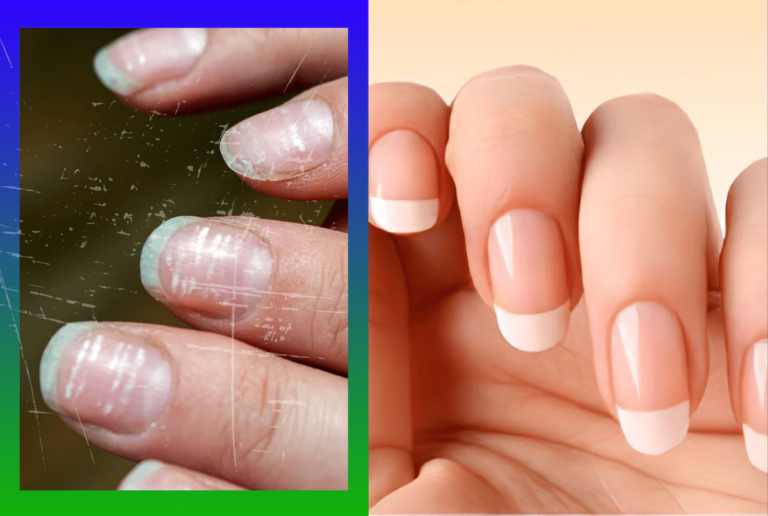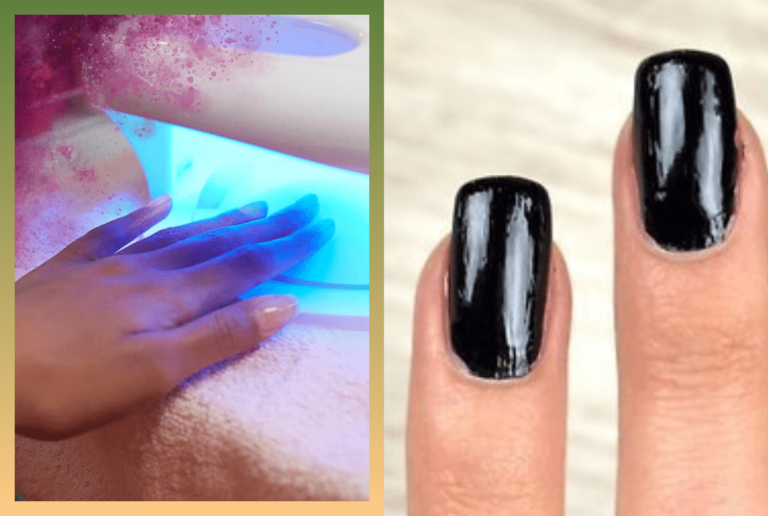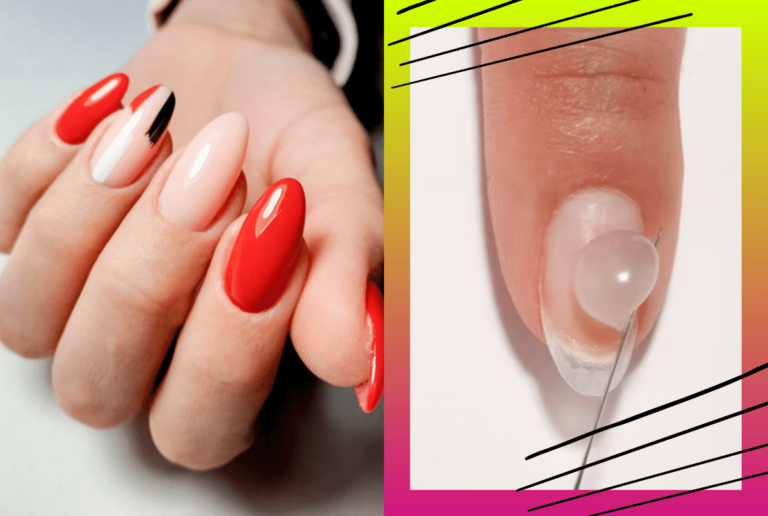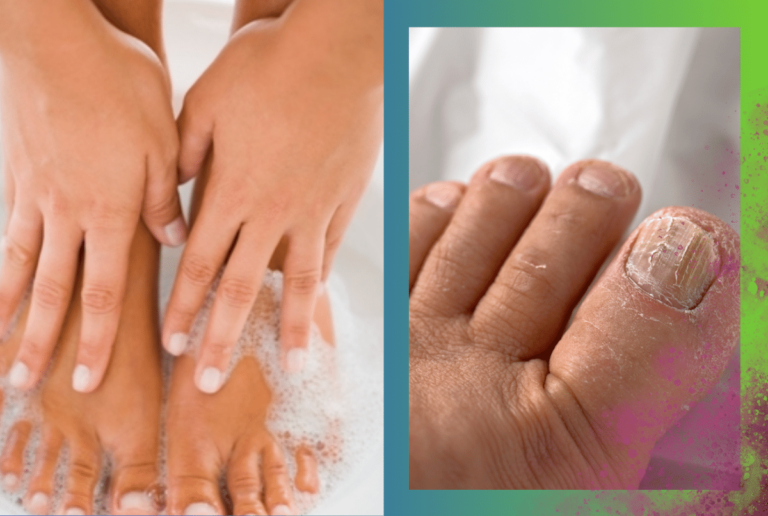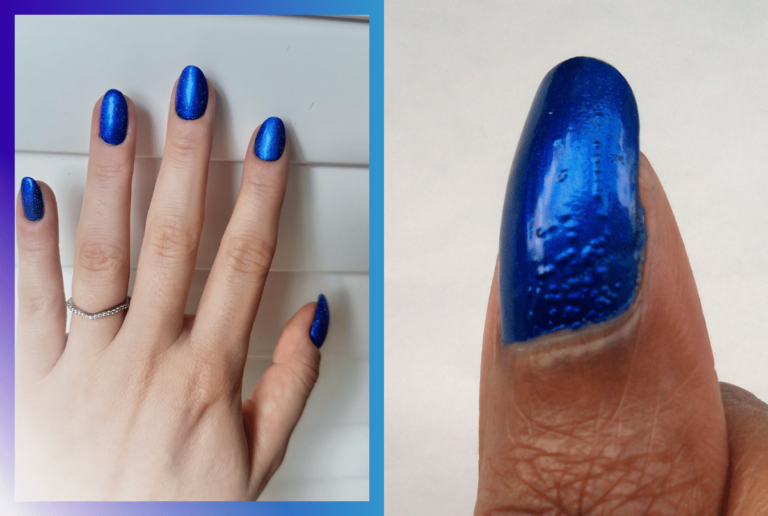Why Do Dip Nails Turn Yellow?
Noticed your dip nails turning yellow and wondering why?
This unexpected change can detract from the beauty of your manicure. Understanding the reasons behind this discoloration is crucial for preventing it in the future.
Well, we’ll be going over:
- What are the main culprits behind the yellowing of dip nails?
- How can the choice of products and application techniques impact the color of your dip nails?
- What steps can you take to ensure your dip nails retain their pristine color for longer?
Let’s dive in.

Key Takeaways
- Exposure to UV light is a common cause of yellowing in dip nails.
- Using low-quality products or improper application can also cause yellowing.
- Choosing high-quality products and following instructions carefully can help prevent yellowing in dip nails.
Understanding Dip Nails
If you’re a fan of manicured nails, you’ve probably heard of dip nails. Dip powder is a type of nail polish that is applied to the nails by dipping them into a powder. The powder adheres to the nail and creates a hard, durable surface.
Dip nails have gained popularity in recent years as a more durable and long-lasting alternative to traditional nail polish. However, one common problem that arises with dip nails is yellowing of the nails. In this section, we will discuss the basics of dip powder and common myths surrounding dip nails.
The Basics of Dip Powder
Dip powder is made up of a mixture of finely ground polymer powder and adhesive resin. The adhesive resin is applied to the nail, and then the nail is dipped into the powder.
The powder adheres to the resin, creating a hard, durable surface. Dip powder comes in a variety of colors and can be used to create various nail art designs.
One of the benefits of dip nails is that they can last up to four weeks without chipping or peeling. However, dip nails are not immune to yellowing. Yellowing of the nails can occur due to a variety of factors, including exposure to sunlight, smoking, and certain medications.
Common Myths About Dip Nails
There are several myths surrounding dip nails and yellowing. One common myth is that dip nails turn yellow because of the chemicals in the dip powder. However, this is not entirely true. While the chemicals in the dip powder can cause yellowing, it is usually due to external factors.
Another myth is that dip nails can’t be removed without damaging the nail bed. This is also not true. Dip nails can be removed with acetone, just like traditional nail polish. However, it is important to avoid picking or peeling the dip powder off the nail, as this can cause damage to the nail bed.
In conclusion, dip nails can be a great alternative to traditional nail polish, but they are not immune to yellowing. Understanding the basics of dip powder and common myths surrounding dip nails can help you maintain healthy, beautiful nails.
Remember to take care of your nails by avoiding exposure to sunlight, smoking, and certain medications, and always remove dip powder properly to avoid damaging the nail bed.
Causes of Yellowing in Dip Nails
If you’ve ever had dip nails, you may have noticed that they can turn yellow over time. This can be frustrating, especially if you’ve invested time and money into getting your nails done. Here are some possible causes of yellowing in dip nails:
Staining from Dark Nail Polish
One of the most common causes of yellowing in dip nails is staining from dark nail polish. If you frequently wear dark colors like black, navy, or dark red, the pigments in the polish can seep into the dip powder and cause discoloration.
This can be especially noticeable if you don’t use a base coat, which can help prevent staining.
Chemical Reactions and Harsh Chemicals
Dip nails involve a lot of chemicals, and some of them can react with each other or with the natural oils on your skin to cause yellowing. For example, some dip powders contain sulfur, which can react with moisture to create hydrogen sulfide gas.
This gas can cause discoloration and an unpleasant odor. Additionally, harsh chemicals like acetone or alcohol can strip away the top layer of your nails, leaving them more vulnerable to discoloration.
Fungal Infections and Health Issues
In some cases, yellowing in dip nails can be a sign of a fungal infection or other health issue. Fungal infections can cause thick, discolored nails, and if left untreated, they can spread to other nails or even to the skin around your nails.
Other health issues like thyroid problems or psoriasis can also cause yellowing or discoloration of the nails.
To prevent yellowing in dip nails, it’s important to take good care of your nails and to avoid harsh chemicals and dark nail polish. You can also try using a base coat or a top coat with UV protection to help prevent discoloration.
If you notice persistent yellowing or other changes in your nails, it’s a good idea to see a doctor or a nail technician for advice.
Preventive Measures and Best Practices
Dip nails are a great way to achieve a long-lasting, glossy manicure. However, one common problem associated with dip nails is yellowing. In this section, we will discuss preventive measures and best practices to help you avoid this issue.
Proper Application and Removal Techniques
Proper application and removal techniques are key to preventing yellowing of dip nails. When applying the dip powder, make sure to apply a base coat to protect your natural nails. This will also help prevent the dip powder from coming into direct contact with your nails, which can cause yellowing.
When removing the dip powder, avoid using acetone or harsh nail polish remover. Instead, opt for a gentle, acetone-free nail polish remover. This will help prevent your nails from becoming dry and brittle, which can lead to yellowing.
Protective Measures for Nail Health
In addition to proper application and removal techniques, there are a few other protective measures you can take to maintain your nail health and prevent yellowing.
First, consider wearing gloves when doing household chores or other activities that involve exposure to harsh chemicals. This will help protect your nails from damage and yellowing.
Second, make sure to apply sunscreen to your hands when spending time in the sun. UV rays can cause yellowing and other damage to your nails, so sun protection is key.
By following these preventive measures and best practices, you can help maintain the health and appearance of your dip nails and avoid yellowing.
Identifying and Treating Underlying Conditions
Dip nails are a popular type of artificial nails that can last up to three weeks. However, they may turn yellow due to several reasons, including underlying health conditions. Identifying and treating these conditions can help prevent yellowing of dip nails.
When to See a Healthcare Provider
If you notice that your dip nails have turned yellow, it is essential to see a healthcare provider. They can help identify the underlying cause of the discoloration and recommend appropriate treatment. Some of the underlying diseases that may cause yellow nails include:
- Yellow nail syndrome: a rare condition that causes slow nail growth, thickening, and yellow discoloration of the nails.
- Fungal infection: a common infection that can cause yellow, thick, and brittle nails.
- Psoriasis: a skin condition that can cause yellow, ridged, and pitted nails.
- Lung disease: some lung diseases, such as chronic bronchitis and emphysema, can cause yellow nails.
Treatment Options for Nail Discoloration
The treatment for yellow nails depends on the underlying cause. If the discoloration is due to a fungal infection, antifungal medication may be prescribed. If it is due to psoriasis, a dermatologist may recommend topical or oral medication.
In some cases, treating the underlying disease may help improve the appearance of the nails. For example, quitting smoking can help improve lung function and prevent yellow nails in people with lung disease.
In conclusion, yellow dip nails may be a sign of an underlying health condition. If you notice that your nails have turned yellow, it is essential to see a healthcare provider to identify the underlying cause and recommend appropriate treatment.
Maintaining Healthy Nails After Treatment
Congratulations on your beautiful new dip powder nails! Now that you have invested in this treatment, it is essential to maintain healthy nails. Here are some tips to help you keep your nails looking great.
Lifestyle Changes for Nail Care
Smoking cessation is one of the best things you can do for your nails. Smoking can cause yellowing of nails and slow down the growth of nails. Additionally, smoking can make your nails brittle and weak. By quitting smoking, you can improve the health of your nails and overall health.
Vitamin E is an essential nutrient for healthy nails. It helps to strengthen nails and promote growth. You can take vitamin E supplements or eat foods rich in vitamin E, such as nuts, seeds, and leafy greens.
Ongoing Nail Maintenance
Regular nail care is essential for healthy nails. Here are some tips for ongoing nail maintenance:
- Keep your nails clean and dry.
- Use a moisturizer to keep your nails and cuticles hydrated.
- Avoid using harsh chemicals, such as acetone, on your nails.
- Wear gloves when doing household chores or gardening to protect your nails.
- Trim your nails regularly to prevent them from breaking or splitting.
If you notice any nail changes, such as yellowing or thickening of nails, consult a dermatologist. Some nail changes can be a sign of an underlying health condition.
In conclusion, maintaining healthy nails after treatment is essential for the longevity of your dip powder nails. By making lifestyle changes and practicing ongoing nail maintenance, you can keep your nails looking great.
Frequently Asked Questions
What causes discoloration in dip powder manicures?
Dip powder manicures can turn yellow due to several reasons. One of the most common reasons is prolonged exposure to UV light.
The UV rays can break down the pigments in the dip powder, leading to discoloration. Additionally, the use of low-quality products or improper application techniques can cause yellowing.
How can I prevent my white nail polish from yellowing?
To prevent your white nail polish from yellowing, you should avoid exposing your nails to direct sunlight or tanning beds.
You should also avoid using harsh chemicals, such as bleach or cleaning products, without gloves. Additionally, you can try applying a clear topcoat to protect your white nail polish from yellowing.
What are the best practices for maintaining the color of French manicure dip nails?
To maintain the color of your French manicure dip nails, you should avoid exposing your nails to harsh chemicals or UV light.
Additionally, you should avoid using your nails as tools, as this can cause chipping and discoloration. You can also try applying a clear topcoat to protect your French manicure dip nails from damage.
Can exposure to the sun cause white nails to turn yellow?
Yes, exposure to the sun can cause white nails to turn yellow. The UV rays in sunlight can break down the pigments in your nail polish, leading to discoloration. To prevent this, you should avoid exposing your nails to direct sunlight or tanning beds.
What methods are effective for removing yellow stains from white gel nails?
One effective method for removing yellow stains from white gel nails is to use a mixture of baking soda and hydrogen peroxide.
Simply mix equal parts baking soda and hydrogen peroxide to form a paste, then apply the paste to your nails and let it sit for a few minutes before rinsing off. You can also try using a nail whitening pen or soaking your nails in lemon juice.
Why might my nails have a yellowish hue after using dip powder?
If your nails have a yellowish hue after using dip powder, it could be due to several reasons. One possible reason is that your nails were not properly cleaned before application.
Additionally, the use of low-quality products or improper application techniques can cause yellowing. Finally, prolonged exposure to UV light can also cause yellowing.

